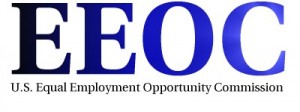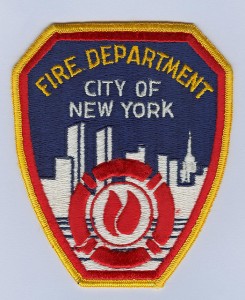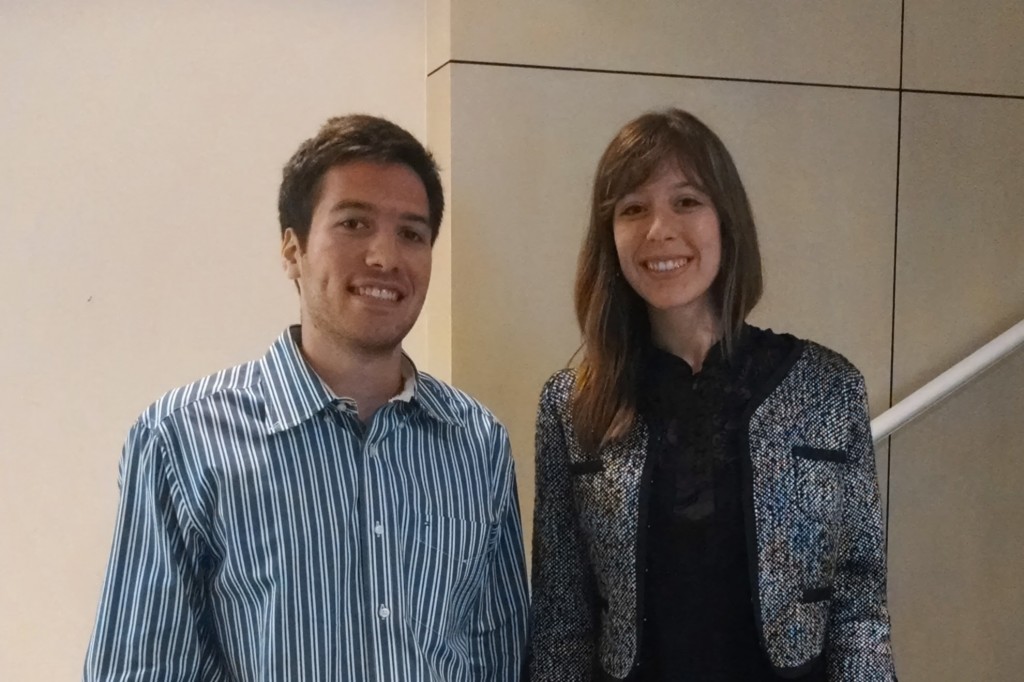How You Treat Candidates Makes a Difference (Part 1): Winning the ARMs Race
Today, all organizations, including public sector agencies, are locked in a fierce competitive struggle to attract, hire, and retain top talent. Unfortunately, the days are long gone when an organization could simply put an advertisement in the paper, interview, conduct a background check, and then pick and choose between a large pool of potential candidates. Organizations today are locked in a race where they must Actively Manage their Reputations (the ARMs race) as potential employers.
In this and the next column, I will look at how public sector organizations can actively manage their reputations. In the current column, we will discuss the general topic of reputation or image and its relation to selection strategy. The next monthly column will be devoted to a discussion of practical steps that public sector organizations can take to manage their image as future and current employers.
Importance of Public Sector Branding
Whether referred to as a brand or a reputation, the topic of the management of an organization’s image is one that has attracted a great deal of recent attention in the popular media, technical press, and the academic literature. For example, the most recent IPMA-HR News (see the November 2013 issue, articles by Amanda Cuda, Branding: What You Can Learn from the Private Sector, and Tim McManus, A Better Brand Can Drive Talent to You), featured two separate articles on branding. Now, one could argue that organizations have always been interested in their image, but what is clearly new is the recognition that recruitment and assessment strategies play a large and growing role in shaping the image applicants and employees hold of private and public sector entities. At the same time, there has been a growing movement aimed at improving the applicant experience during recruitment, assessment, and onboarding. (more…)
Assessment Centers: The Beginnings and Beyond
Assessment centers were established by companies in the mid-20th century and the procedure has been expanding ever since. Assessment centers determine which employees exhibit the potential to earn promotions in managerial positions. This is accomplished through utilizing multiple assessment techniques that simulate realistic situations that candidates would face on the job for which they are being considered, and they are asked to handle these as if they were in the real situation. It goes without saying that there is no uniform way to design the content, administration, and cost of the process as these factors depend on the target group and its objectives.
When considering if a human resources department should utilize assessment centers, it is important to consider an assortment of factors. Let’s begin by briefly examining the history of this procedure. One of the first documented uses of assessment centers was in World War II when the United States was selecting spies to send to Europe. The candidates were required to create a cover story and hide their identities while the interviewers attempted to break the candidates’ covers through situational tests. The next significant milestone in assessment centers occurred in 1956 when AT&T embarked on a longitudinal study to investigate which attributes of managers were correlated with success. Approximately ten years later the researchers noticed a significant trend in the data. Through the assessment intervention, the staff correctly identified 82 percent of the men who were promoted to middle-management positions. Likewise, the staff correctly identified 94 percent of the men who were not promoted. These predictions and many others made possible by the implementation of assessment centers led to their widespread usage that are still used today. (more…)
Same-Sex Discrimination Suit Settled
 Under a consent judgment in EEOC v. Boh Brothers Construction Co. LLC, Boh Bros. Construction Co. agreed to pay $125,000 in compensatory damages to a former employee in a same-sex discrimination case brought by EEOC. The original suit was filed in 2009 in the Eastern District of Louisiana. New Orleans-based Boh Bros. is a major construction company that operates in the New Orleans and Gulf South areas. The suit charged that a male company supervisor harassed a male ironworker with verbal abuse and taunting gestures of a sexual nature. The supervisor admitted that he harassed the ironworker because he thought the employee was feminine and did not conform to the supervisor’s gender stereotype of “rough ironworkers”. A jury in district court found that Boh Bros. violated Title VII by permitting hostile work environment sexual harassment. Boh Bros. appealed the district court’s ruling. A three judge panel of the Fifth Circuit Court of Appeals reversed the jury verdict. Noting that there was no evidence that the ironworker was homosexual or effeminate, the panel found that the evidence did not establish that Boh Bros. had harassed the ironworker “because of sex”, which is the standard under Title VII of the Civil Rights Act.
Under a consent judgment in EEOC v. Boh Brothers Construction Co. LLC, Boh Bros. Construction Co. agreed to pay $125,000 in compensatory damages to a former employee in a same-sex discrimination case brought by EEOC. The original suit was filed in 2009 in the Eastern District of Louisiana. New Orleans-based Boh Bros. is a major construction company that operates in the New Orleans and Gulf South areas. The suit charged that a male company supervisor harassed a male ironworker with verbal abuse and taunting gestures of a sexual nature. The supervisor admitted that he harassed the ironworker because he thought the employee was feminine and did not conform to the supervisor’s gender stereotype of “rough ironworkers”. A jury in district court found that Boh Bros. violated Title VII by permitting hostile work environment sexual harassment. Boh Bros. appealed the district court’s ruling. A three judge panel of the Fifth Circuit Court of Appeals reversed the jury verdict. Noting that there was no evidence that the ironworker was homosexual or effeminate, the panel found that the evidence did not establish that Boh Bros. had harassed the ironworker “because of sex”, which is the standard under Title VII of the Civil Rights Act.
The EEOC, noting that this interpretation of Title VII conflicts with Supreme Court law asked the full en banc Fifth Circuit Court to rehear the case. (The Supreme Court recognized that the stereotyping of gender norms in the workplace could constitute actionable Title VII discrimination in Price Waterhouse v. Hopkins, 1989.) The en banc Fifth Circuit agreed to rehear the case and heard arguments on rehearing in May 2013. A 10- judge majority of the deeply divided 16 judge court concluded that EEOC could use evidence that Boh Bros. supervisor viewed the ironworker and alleged harassment victim as “insufficiently masculine” to make its Title VII claim. The majority held that harassment “because of sex” is based on lack of conformity with gender stereotypes. The issue is whether the harasser considered the victim to deviate from gender stereotypes, and not whether the victim fails in fact to conform to those stereotypes. What mattered was that the supervisor saw the ironworker as “unmanly” – not whether the ironwork was actually “feminine” in some objective sense. The case was remanded to the District Court for further proceedings, including setting the proper amount of emotional damages in light of the appellate decision. The parties thereafter reached an agreement for consent judgment.
Reprinted with permission from the Personnel Testing Council of Metropolitan Washington.
Social Media in the Workplace
 On March 12, 2014 a panel of attorneys testified at an open meeting of the EEOC on the topic of social media in the workplace. Testifying were Jonathan Segal of Duane Morris, LLP representing the Society for Human Resource Management (SHRM), Renee Jackson of Nixon Peabody, LLP who counsels employers, Lynne Bernabei of Bernabei and Wachtel, PLLC who litigates for plaintiffs, Carol R. Miaskoff the Acting Associate Legal Counsel at the EEOC, and Rita Kittle, senior trial attorney at the EEOC. The purpose of the meeting was to inform the EEOC about the growing use of social media and how it impacts laws that the EEOC enforces. Testimony focused on social media in hiring, social media in the workplace, and social media as a source of discovery in employment discrimination cases.
On March 12, 2014 a panel of attorneys testified at an open meeting of the EEOC on the topic of social media in the workplace. Testifying were Jonathan Segal of Duane Morris, LLP representing the Society for Human Resource Management (SHRM), Renee Jackson of Nixon Peabody, LLP who counsels employers, Lynne Bernabei of Bernabei and Wachtel, PLLC who litigates for plaintiffs, Carol R. Miaskoff the Acting Associate Legal Counsel at the EEOC, and Rita Kittle, senior trial attorney at the EEOC. The purpose of the meeting was to inform the EEOC about the growing use of social media and how it impacts laws that the EEOC enforces. Testimony focused on social media in hiring, social media in the workplace, and social media as a source of discovery in employment discrimination cases.
Defining Social Media
All presenters agreed there is no standard definition of social media and that what constitutes social media is constantly changing and expanding. For the purpose of the meeting, Jackson stated that “social media” will refer to any websites or mobile device applications (“apps”) that allow users to create, post, upload, comment on, interact with, or share content with other users (including the user’s own network, networks of others, or members of the public). Jackson went on to indicate that social media includes things such as:
- Social or professional networking platforms such as Facebook and LinkedIn, which allow users to connect with family and friends and build professional networks;
- Blogs such as HuffingtonPOST, TMZ, and Gawker, and micro-blogs such as Twitter, which operate as online journals, news aggregators, and places for public commentary; and
- Video, image, and text sharing platforms such as YouTube, Instagram, Snapchat, Pinterest, and Confide, where users upload, view, exchange, and comment on videos, images, and text.
Segal indicated that employers use social media for several different purposes: employee engagement and knowledge sharing, such as having a corporate Facebook page or blog to keep employees in remote offices aware of new programs or policies, marketing to clients, potential customers and crisis management, as well as for recruiting and hiring of new employees.
Social Media and Hiring
It is increasingly common for employers to use social media to recruit and obtain information about prospective employees and for applicants to use social media to find and apply for jobs. Segal shared a survey done by SHRM showing that 77% of companies reported they used social networking sites to recruit candidates, up from 34% in 2008. Jackson indicated that some of the activities employers use social media for include:
- Identifying and sourcing potential candidates;
- Improving the candidate experience by allowing applicants to apply directly through social media;
- Learning more about the candidates who have applied to or who are interviewing with the company;
- Validating an applicant’s candidacy against job criteria;
- Validating an applicant’s resume against their professional network profile;
- Evaluating an applicant’s potential organizational “fit”;
- Identifying an applicant’s professional qualifications, communication skills, and well-roundedness; and
- Disqualifying applicants based on negative information found.
Reese v. Department of Interior (National Park Service) is an example at the federal level of a complaint related to identifying and sourcing candidates via social media presented by Miaskoff. In this case, the complaint alleged that she was not selected for a Park Ranger position due to her age (61) and sex (female). She asserted that the agency’s recruitment of younger people for this position through Facebook and other social media put older workers at a disadvantage, because they use computers less often than younger people, and therefore using social media had a disparate impact on workers protected by the Age Discrimination in Employment Act. On appeal, the EEOC affirmed that the complainant had not put forth evidence of disparate impact or preference for younger applicants linked to the agency using social media for recruitment.
Miaskoff noted that recruitment, selection, and employment activities are subject to EEO laws, regardless of the media the employer uses. She indicted that “the EEOC laws do not expressly permit or prohibit the use of specific technologies…. the key question….is how the selection tool are used.” As Bernabei indicates, surveys of hiring managers show that they are increasingly using social media to screen applicants and that employers make determinations on applicants’ suitability. Of course social media websites also display “non-job relevant information that could be used inappropriately for evaluating applicants, resulting in biased hiring decisions.” A person’s profile on many sites include gender, age, sexual orientation, and political philosophy, all of which are protected characteristics under various state or federal laws. Moreover, there is very little data to indicate whether social network derived data accurately predicts job performance.
Several presenters recommended that employers use a third-party consumer reporting agency or a designated individual within the organization (who does not make hiring decisions) to conduct the social media search and filter out any protected class information. As we have previously reported, a number of states have passed legislation (and many states have such laws pending) to prevent employers from requiring access to personal accounts on social media. Maryland was the first state to pass such a law. The law prohibits an employer from requesting or requiring an employee or applicant to disclose a user name or password and permit access to personal social media accounts. Moreover, it prohibits an employer from discharging, disciplining, or otherwise penalizing an employee or applicant for failing to comply with the employer’s request. There are several proposals before Congress to do the same thing at the federal level.
Use of Social Media in the Workplace
Use of social media in the workplace is pervasive. Employees use social media throughout the workday on both computers and mobile devices. The use of personal social media accounts may impact workplace harassment cases. As Bernabei indicates, even if employees post harassing or derogatory information about coworkers away from the workplace, an employer may be liable for a hostile work environment if it was aware of the postings, or if the harassing employee was using employer-owned devices or accounts. As an example, in Guardian Civic League v. Philadelphia Police Department, plaintiffs alleged that the police department created a hostile work environment by allowing white police officers to operate a racist website and to post racially offensive comments while on and off duty. The case against the police department settled for $152,000 plus injunctive relief. In another example, at the federal level, an air traffic controller asserted that he was subject to a hostile work environment based on race and sex, after he found that a co-worker made disparaging remarks about him on Facebook, after he made an office “food run” to Chick-fil-A (Knowlton v. Department of Transportation, Federal Aviation Administration). The employee, who didn’t have a Facebook account learned about it from other co-workers who inferred the alleged harasser was upset that food was ordered from Chick-fil-A because of its purported anti-gay reputation. Later the employee alleged that his regular trainer, who was friends with the alleged harasser, reassigned him to another trainer who began harassing him. The agency dismissed the case, stating that the initial Facebook post was insufficient evidence of a hostile work environment. On appeal, the EEOC reversed the agency’s decision, stating that the negative work atmosphere the employee alleged – including the harassment during training was part of a series of incidents dating to the initial Facebook post.
Social Media in the Discovery Process
There are times when an employee or former employee brings suit against an employer and the employer seeks to gain access to the employee’s social media. Although many of the postings may not be relevant to the litigation some may be relevant such as information that may be embarrassing to the employee or postings that may contradict facts the employee is using to support his claims. Bernabei indicated that if an employee’s “public” postings raise suspicions or red flags sufficient to demonstrate that the employee’s private posts may lead to discovery of admissible evidence, that will often be enough to tip the balance in favor of the rest of the employee’s social media account to be discoverable. Kittle noted that increased efforts to access private social media accounts may deter people from pursuing a charge or lawsuit in the future.
Reprinted with permission from the Personnel Testing Council of Metropolitan Washington.
New York City Fire Department Lawsuit Settled
We have reported on US and Vulcan Society, Inc. v. City of New York in previous articles.
 On March 18, 2014 New York City settled this long-running lawsuit in which the Vulcan Society claimed that the city fire department intentionally discriminated against minority applicants. The case was scheduled to go to trial March 31, 2014. The original lawsuit was filed in 2007 by the US Department of Justice and the Vulcan Society, a fraternal organization of black firefighters. The suit claimed that the fire department’s hiring exams and practices excluded minorities from firefighter jobs. In 2011, a federal judge agreed and ordered the creation of a new exam and reforms in hiring practices, including the recruitment of some applicants who failed exams given in 1999 or 2002. However a federal appeals judge ruled in May that the district court went too far in forcing the department to revamp its hiring process. It did leave in place many of the remedies ordered by the lower court, including the appointment of a court monitor. While the city did not dispute the lower court ruling that the exam was discriminatory, it challenged the notion that the discrimination was intentional.
On March 18, 2014 New York City settled this long-running lawsuit in which the Vulcan Society claimed that the city fire department intentionally discriminated against minority applicants. The case was scheduled to go to trial March 31, 2014. The original lawsuit was filed in 2007 by the US Department of Justice and the Vulcan Society, a fraternal organization of black firefighters. The suit claimed that the fire department’s hiring exams and practices excluded minorities from firefighter jobs. In 2011, a federal judge agreed and ordered the creation of a new exam and reforms in hiring practices, including the recruitment of some applicants who failed exams given in 1999 or 2002. However a federal appeals judge ruled in May that the district court went too far in forcing the department to revamp its hiring process. It did leave in place many of the remedies ordered by the lower court, including the appointment of a court monitor. While the city did not dispute the lower court ruling that the exam was discriminatory, it challenged the notion that the discrimination was intentional.
Under the agreement, which must be approved by a federal judge, the city will pay $98 million in back pay, including $6 million in medical benefits, to African American and Hispanic applicants who took the exam to become firefighters in 1999 and 2002. The fire department will create a Chief of Diversity and Inclusion who will report to the Fire Commissioner as well as a Diversity Advocate who will monitor hiring practices and cadet training for discrimination. The fire department will also work with the city’s Department of Education and local colleges to recruit minority applicants.
Reprinted with permission from the Personnel Testing Council of Metropolitan Washington.
Welcoming our Assessment Summer Interns
Hard to believe June is already here and rolling right by, but with the arrival of summer IPMA-HR’s Assessment Department gets some fresh faces. This summer we are pleased to welcome Eli and Miranda as the Assessment Summer Interns.
Eli is a rising senior at the University of Maryland. He is majoring in Psychology and interested in Industrial/Organizational Psychology. He looks forward to not only assisting the assessment department at IPMA-HR, but also gaining practical experience in his field of interest. He’s learned a lot in his first couple weeks here, and is eager to see what the rest of his experience holds.
Miranda is a rising senior at George Mason University. She is studying psychology and criminology and wishes to pursue a career in industrial/organizational psychology. She is from Connecticut and staying in Virginia for the summer to intern with IPMA-HR. Miranda looks forward to learning more about assessments during her time here, specifically the research involved to create an assessment. Her interests include reading, singing, and songwriting.
You can look forward to seeing more from both Eli and Miranda here in the ASR, in the coming weeks.

